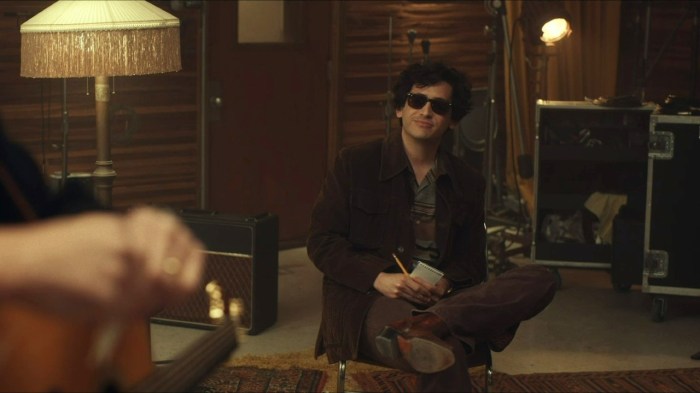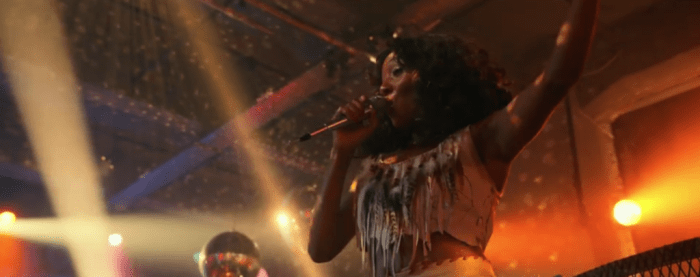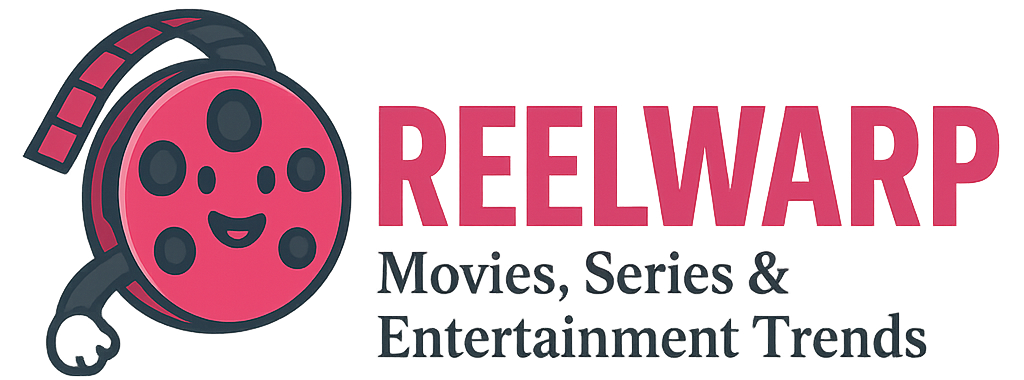Daisy jones and the six big differences between the book and the tv show – Daisy Jones and the Six: big differences between the book and the TV show. This deep dive explores the captivating world of the iconic band, comparing the literary masterpiece to its on-screen adaptation. We’ll dissect character portrayals, narrative styles, musical interpretations, and more, highlighting the unique choices made in each medium. Get ready to uncover the secrets behind these diverging visions of the band’s story.
The book, a sprawling narrative, offers an intimate and detailed look into the band’s rise and fall. The show, with its visual flair, presents a different perspective, focusing on the dramatic elements of the story. This comparison analyzes the strengths and weaknesses of each medium’s approach, exploring how the show adapts the book’s intricate plot while adding its own creative touches.
Character Portrayals: Daisy Jones And The Six Big Differences Between The Book And The Tv Show
Daisy Jones & The Six, both in its book and TV adaptation, is a captivating exploration of complex characters. The show, while generally faithful to the source material, subtly shifts the emphasis and depth of character development, resulting in a unique portrayal that resonates with viewers in different ways. The narrative choices made in each medium shape the audience’s understanding of the band members and their intertwined destinies.The show, in its visual medium, offers a more accessible way to grasp the emotional landscape of the characters, potentially allowing for a deeper connection with the audience through visual cues.
Conversely, the book delves into the characters’ internal struggles and motivations in greater detail, fostering a more nuanced and personal understanding of their motivations.
Comparing and Contrasting Band Member Portrayals
The portrayal of each band member differs significantly between the book and the show. The show often prioritizes a visual narrative, focusing on the external manifestations of the characters’ internal struggles. The book, however, delves deeper into the internal monologues and psychological landscapes of each member. This results in a distinct flavor to the character portrayals, making the show’s characters more relatable in some ways while the book’s characters provide more comprehensive perspectives.
Character Arcs in the Book and Show
The show’s character arcs often deviate from the book’s, prioritizing certain aspects of the story while downplaying others. This shift in focus influences the audience’s interpretation of the characters’ motivations and the overall narrative. For example, certain character arcs in the show are more outwardly focused, while in the book, they are more inwardly reflective.
Nuances in Character Development
The book and the show each present distinct nuances in character development. The show, by its nature, uses visual and emotional cues to convey character development, sometimes making it more accessible. The book, on the other hand, provides a more introspective look into the characters’ psychological struggles, motivations, and relationships, which can provide more complex understanding.
Table: Key Personality Traits of Band Members
| Character | Book Description | Show Description |
|---|---|---|
| Daisy Jones | Ambitious, driven, complex, conflicted | Vulnerable, passionate, charismatic |
| Billy Dunne | Charismatic, emotionally guarded, insecure, talented | Charming, mysterious, troubled, gifted |
| Camila Jones | Supportive, empathetic, conflicted, devoted | Confident, understanding, thoughtful, loyal |
| Graham Nash | Enthusiastic, supportive, sometimes naive, creative | Motivated, dependable, perceptive, creative |
| Sandy Jones | Independent, determined, strong-willed, sometimes selfish | Confident, resilient, assertive, passionate |
Narrative Differences

The storytelling styles of Taylor Jenkins Reid’sDaisy Jones & The Six* and the subsequent Amazon Prime Video series diverge in significant ways. While both aim to capture the band’s rise and fall, the approaches to pacing, structure, and narrative voice create distinct experiences for the reader and viewer. The show, with its visual medium, leans towards a more immediate and emotional engagement, while the book, with its dense prose, invites a more introspective and detailed journey.
The adaptation’s choice to condense and condense plot points impacts the overall narrative flow, resulting in a slightly altered timeline.The series prioritizes a more cinematic approach, presenting the story through a series of vignettes, flashbacks, and character interactions. This allows the show to emphasize the emotional and interpersonal dynamics among the band members. The book, however, takes a more linear and chronological approach, focusing on the internal thoughts and motivations of the characters.
The book provides a more intimate and thorough examination of the characters’ personal journeys.
Storytelling Styles
The book, written in a novelistic style, employs a third-person omniscient perspective, giving readers access to the thoughts and feelings of multiple characters. This allows for a deeper exploration of the complexities of their relationships and motivations. The series, utilizing a combination of first-person perspectives and close-ups, creates a more immediate and visceral experience, though sometimes sacrificing the thoroughness of the book’s exploration of the characters’ inner lives.
Pacing and Structure
The book’s pacing is generally slower, allowing for more detailed character development and world-building. The series, conversely, has a more accelerated pace, focusing on creating a compelling visual narrative. The show often condenses multiple chapters of the book into single episodes, resulting in a quicker, more condensed storyline. The book often devotes substantial space to conversations and internal monologues, adding to its slower pace.
This allows the author to fully flesh out the characters’ personalities and motivations.
Narrative Voice and Perspective
The book’s narrative voice is established through the narrator, who acts as a neutral observer. The show, however, employs a more dynamic narrative voice through the use of close-ups and character-specific perspectives. This allows the audience to experience the story from the viewpoints of multiple characters, enhancing the immediacy of the narrative. The series uses this approach to build tension and suspense, creating a more immediate impact on the viewer.
I’ve been diving deep into the Daisy Jones & the Six book vs. TV show debate lately, and honestly, there are some major differences. The show definitely takes some creative liberties, which is expected, but the pacing and character development felt a bit off. Meanwhile, news about the real housewives Jen Shah sentenced to over 6 years in prison here has me thinking about how these stories, both fictional and real, sometimes blur the lines between entertainment and reality.
Still, I’m eager to see how the Daisy Jones & the Six debate unfolds as more viewers share their opinions.
Adaptation of Plot Points
The show adapts the book’s plot points, but with some notable alterations. For example, some key events are presented differently, with emphasis on particular moments or conflicts. The series expands on certain themes and storylines, like the relationship between Daisy and Billy, while the book might present them in a less immediate manner. The series adds elements not present in the book, focusing on visual representation of the music and performances.
Comparison of Key Events
| Event | Book Order | Show Order |
|---|---|---|
| Band Formation | Early chapters | Early episodes |
| First Major Concert | Mid-book | Mid-season |
| Billy’s Affair | Detailed over several chapters | Condensed into several episodes |
| Band Breakup | Climax of the narrative | Climax of the season |
| Aftermath of the Breakup | Final chapters | Final episodes |
The table illustrates how the show and book present key events in slightly different orders and with varying levels of detail. The show prioritizes a visual and dramatic presentation, while the book allows for a more contemplative and detailed approach to these events.
Setting and Atmosphere
The atmosphere in Taylor Jenkins Reid’sDaisy Jones & The Six* is thick with the intoxicating mix of youthful ambition, simmering tensions, and the pervasive shadow of the music industry’s dark underbelly. Reid masterfully crafts a palpable sense of the 1970s, using evocative descriptions to paint vivid portraits of the band’s chaotic life on the road and the glamorous yet precarious world of stardom.
Okay, so I’ve been digging into the Daisy Jones & The Six book vs. show debate, and there are some seriously major differences. The show definitely takes some creative liberties, which is always a risk. Interestingly, it got me thinking about James Gunn’s recent Superman reboot, and whether he might have just dropped a hint about a key source material inspiration, like in did james gunn just share a key piece of source material inspiring his superman reboot.
It’s a fascinating parallel, as both projects are taking well-loved stories and adapting them for a modern audience, and it makes you wonder how much artistic license is really necessary. All that said, I’m still trying to figure out what I think of the Daisy Jones & The Six adaptation. Maybe I’ll watch it again.
The book’s setting, both literal and metaphorical, is crucial to understanding the characters’ motivations and the unfolding narrative.The TV adaptation, while capturing the era’s visual aesthetic, sometimes struggles to fully embody the book’s emotional depth. The show’s setting, while undeniably impressive, occasionally feels less immersive and more focused on surface-level depictions of the period. This difference in portrayal significantly impacts the overall experience, affecting the narrative’s pacing and emotional resonance.
Book’s Atmosphere and Setting
The book’s atmosphere is meticulously crafted through sensory details. Reid immerses the reader in the heady mix of smoke-filled recording studios, the roar of the crowd at sold-out stadiums, and the hushed intimacy of hotel rooms where secrets are whispered. The setting is not just a backdrop; it’s an active participant in the narrative, reflecting the characters’ emotions and the unfolding drama.
For example, the descriptions of the band’s tour buses and their cramped living spaces contribute to the sense of claustrophobia and pressure that surrounds their success.
Show’s Atmosphere and Setting
The show visually captures the 1970s aesthetic with striking accuracy. The costumes, hairstyles, and the overall design choices effectively transport viewers to that era. However, the show’s atmosphere sometimes feels less emotionally charged, more focused on the visual spectacle rather than the internal conflicts of the characters. The show’s presentation of the settings, while visually appealing, occasionally lacks the immersive quality of the book’s descriptions.
Okay, so the Daisy Jones & The Six show’s got some major differences from the book, right? It’s interesting how sometimes a project can seem great on paper, but then the adaptation falls short. For instance, comparing the portrayal of the band’s early struggles and relationships to the book is quite a contrast. It’s kind of like what happened with Alexandra Daddario, who, as reported in this article alexandra daddario admits baywatch negatively affected her career but shes not one for regrets , felt the impact of a certain role early in her career.
Ultimately, though, the differences between the book and the show in Daisy Jones & The Six are still fascinating to analyze.
Differences in Portrayal
The show, in its attempt to create a visually captivating experience, sometimes sacrifices the nuances of the book’s detailed settings. The show’s emphasis on the physicality of the environment, while effective, does not always reflect the emotional depth of the book. For example, the book meticulously depicts the psychological toll of the band’s constant travel, while the show, though visually accurate, doesn’t fully convey the exhaustion and isolation.
Key Scenes and Their Presentation
- The band’s first major concert: The book vividly portrays the electric energy and the palpable tension surrounding the performance. The show captures the visual spectacle but may lack the same emotional depth in depicting the internal anxieties and triumphs of the characters.
- The recording sessions: In the book, the recording studio becomes a character, reflecting the pressure and creativity of the moment. The show, while showcasing the studio, may not fully capture the intense creative struggle and the emotional weight of the musical process.
Overall Ambiance
The book’s ambiance is one of simmering tension and intense emotion, reflected in the characters’ interactions and the setting’s details. The show, while achieving a compelling visual presentation of the 1970s, sometimes loses the emotional undercurrents that are essential to the book’s narrative.
Key Locations
| Location | Book Description | Show Description |
|---|---|---|
| Tour buses | Depicted as cramped and claustrophobic, reflecting the band’s isolation and pressure. | Visually accurate but may not fully convey the emotional weight of the confined spaces. |
| Recording studios | Sensory details evoke the creative energy and intense pressure of the recording process. | Showcases the studios’ aesthetics but may not fully capture the emotional intensity of the recording sessions. |
| Concerts | Electric energy, palpable tension, and the characters’ anxieties are all interwoven with the setting. | Visual spectacle but may lack the emotional depth of the book’s depiction of the characters’ inner turmoil during the performances. |
Themes and Messages
Daisy Jones & The Six delves into the complex world of fame, relationships, and the price of success. Both the book and the show explore the fragility of dreams, the corrosive nature of ambition, and the devastating impact of hidden truths on personal lives and professional careers. The differing portrayals of these themes reveal the unique perspectives each medium brings to the story.The book and show, while sharing a core set of themes, diverge in their emphasis and development.
The book delves deeper into the psychological aspects of the characters’ struggles, often through introspection and detailed internal monologues. The show, on the other hand, prioritizes a more visual and immediate exploration, often highlighting the external manifestations of these themes through actions and reactions. This difference in approach affects how the narrative explores the same core ideas.
Key Themes in the Book
The book emphasizes themes of creative ambition, the price of fame, and the fragility of relationships. The story reveals how the pursuit of success can consume individuals, leading to isolation, self-destruction, and the erosion of personal connections. The characters grapple with the pressure of maintaining a public image while struggling with their private lives.
- The seductive nature of fame: The characters are captivated by the allure of stardom, but the book exposes the insidious ways in which fame can corrupt and control. It shows how the pressure to maintain an image can lead to unhealthy behaviors and distorted perceptions of reality.
- The destructive power of addiction: The book delves into the various forms of addiction – substance abuse, dependence on relationships, and the craving for attention – and how they undermine the characters’ lives and relationships.
- The importance of authenticity: The book explores the struggle to reconcile public personas with private identities, demonstrating how a lack of authenticity can lead to emotional detachment and isolation.
Key Themes in the Show
The show focuses on the visual representation of fame, the power dynamics within relationships, and the emotional toll of public scrutiny. The show highlights the often-tense atmosphere surrounding the band, the complex relationships, and the impact of the media’s relentless pursuit of their story.
- The pressure of public perception: The show vividly portrays the weight of public expectation and the relentless media attention that surrounds the band. This pressure shapes their decisions and actions.
- The struggles within relationships: The show emphasizes the interpersonal conflicts and the emotional vulnerabilities within the band and their personal lives. These conflicts often stem from miscommunication and unresolved issues.
- The corrosive impact of ambition: The show demonstrates how unchecked ambition and the pursuit of fame can lead to conflicts, betrayals, and ultimately, the disintegration of relationships and careers.
Similarities and Differences in Themes
Both the book and the show explore the same core themes but emphasize different aspects. The book delves deeper into the psychological ramifications of fame, addiction, and the search for authenticity, while the show presents a more visual and immediate portrayal of the pressures of public scrutiny and the complexities of interpersonal relationships.
Variations in Theme Exploration
The book explores themes with greater psychological depth and introspective narration, focusing on the characters’ internal struggles and motivations. The show, conversely, relies more on external conflicts, actions, and reactions to highlight the themes.
Development of Themes in Each Medium
The book develops themes through extensive character dialogue and detailed descriptions of their inner thoughts and feelings. The show conveys themes through visual storytelling, dramatic tension, and the characters’ interactions and reactions to external pressures.
Comparison Table, Daisy jones and the six big differences between the book and the tv show
| Theme | Book | Show |
|---|---|---|
| Creative Ambition | Exploration of the cost of relentless pursuit of success. | Visual representation of the pressure and sacrifices associated with fame. |
| Fragility of Relationships | Detailed exploration of the damage caused by secrets and hidden truths. | Focus on the visible conflicts and tensions within the band and personal lives. |
| Price of Fame | Psychological impact of fame on personal lives. | Visual depiction of the pressures and consequences of public scrutiny. |
Final Summary

Ultimately, both the book and the show offer unique experiences. The book’s detailed descriptions and intricate character development allow for a deeper understanding of the characters and their motivations. The show, on the other hand, offers a more immediate and visual representation of the story, making it more accessible to a wider audience. This analysis provides a nuanced understanding of the creative choices made by both the author and the showrunners and ultimately highlights the power of storytelling in different mediums.

